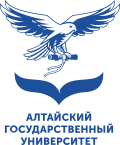bge
أفضل ترمس ياباني
عند التفكير في اقتناء ترمس يجمع بين الجودة، الاعتمادية، والأداء طويل الأمد، يظهر اسم ترامس zojirushi كخيار مفضل لدى شريحة واسعة من المستخدمين. وفي ظل التنوع الكبير في عالم الترامس والدلال، يصبح اختيار المنتج المناسب قرارًا يعتمد على تفاصيل دقيقة تتعلق بالعزل، الخامات، وسهولة الاستخدام. تابع القراءة لاكتشاف الأسباب التي تجعل هذا الاختيار خطوة مدروسة.
لماذا تختار ترامس zojirushi ؟
1 - تقنية عزل حراري متقدمة
تعتمد ترامس zojirushi على تقنيات عزل دقيقة تحافظ على حرارة المشروبات لفترات طويلة. ويضعها هذا التفوق في مقدمة منتجات الترامس والدلال التي تهدف إلى تقديم أداء ثابت دون فقدان الحرارة أو البرودة.
2 - جودة يابانية في التصنيع
تُصنع ترامس zojirushi وفق معايير صارمة تعكس دقة الصناعة اليابانية. وتمنح هذه الجودة ثقة عالية عند مقارنتها بغيرها من منتجات الترامس والدلال المنتشرة في الأسواق.
3 - الحفاظ على نكهة المشروبات
تحافظ ترامس zojirushi على الطعم الأصلي للمشروبات دون أي تغيير. وتُعد هذه النقطة عنصرًا أساسيًا يبحث عنه المستخدمون عند اختيار منتجات الترامس والدلال ذات المستوى العالي.
4 - تصميم عملي وآمن
تتميز ترامس zojirushi بتصميم يسهل عملية الصب ويحد من الانسكاب. ويُسهم هذا الجانب في تعزيز مكانتها ضمن فئة الترامس والدلال التي تركز على الأمان وسهولة الاستخدام.
5 - تنوع الاستخدامات
تناسب ترامس zojirushi الاستخدام اليومي، المناسبات، والسفر. ويجعلها هذا التنوع خيارًا متوازنًا ضمن عالم الترامس والدلال الذي يخدم أنماط استخدام مختلفة.
6 - سهولة التنظيف والصيانة
تُصمم ترامس zojirushi بطريقة تتيح تنظيفها بسهولة دون تعقيد. ويُعد ذلك عاملًا مهمًا عند تقييم منتجات الترامس والدلال من حيث الاستخدام العملي طويل الأمد.
7 - متانة واعتمادية عالية
تعكس ترامس zojirushi مستوى عالٍ من المتانة، ما يقلل الحاجة إلى الاستبدال المتكرر. ويمنحها هذا التفوق مكانة قوية بين منتجات الترامس والدلال الموثوقة.
8 - تصميم أنيق يناسب جميع البيئات
تجمع ترامس zojirushi بين البساطة والأناقة، ما يجعلها مناسبة للاستخدام المنزلي والرسمي. ويُعد هذا التوازن سمة مهمة ضمن منتجات الترامس والدلال العصرية.
9 - قيمة حقيقية مقابل الاستخدام
عند اختيار ترامس zojirushi، يحصل المستخدم على منتج يجمع بين الأداء والجودة. وتُعد هذه القيمة من أبرز الأسباب التي تدعم تفضيلها داخل فئة الترامس والدلال عالية المستوى.
خاتمة
إن اختيار ترامس zojirushi يعكس اهتمامًا بالجودة والتفاصيل الدقيقة التي تصنع الفارق في تجربة الاستخدام اليومية. ومن خلال العزل الحراري المتقن، التصميم العملي، والمتانة العالية، تفرض هذه الترامس حضورها القوي في عالم الترامس والدلال. و مع اعتمادها على معايير تصنيع دقيقة، تبقى خيارًا مثاليًا لمن يبحث عن أداء ثابت وتجربة استخدام موثوقة تدوم طويلًا.

